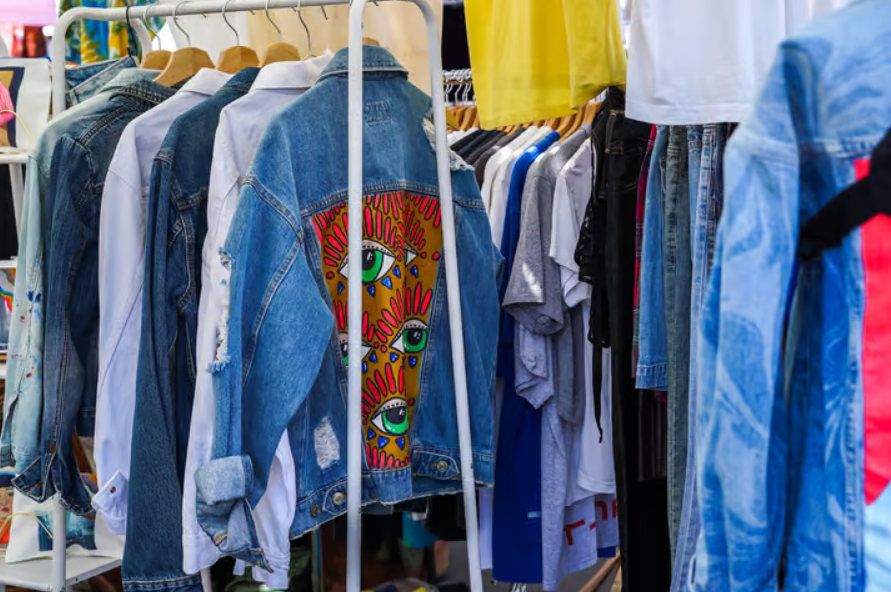Blog
The Rise of Sustainable Fashion: How India’s Secondhand Market is Reshaping Consumer Habits
In India’s bustling fashion landscape, a quiet revolution is taking place. While the country’s massive garment industry continues to produce billions of dollars worth of new clothing annually, an increasing number of environmentally conscious consumers are turning to secondhand fashion, marking a significant shift in consumption patterns.
The Growing Impact of Secondhand Fashion
India’s position as the world’s fifth-largest garment exporter, with an impressive $15 billion in trade value for 2023, highlights the industry’s enormous scale. The sector employs approximately 45 million people – comparable to Spain’s entire population. However, this massive production comes with significant environmental consequences.
Key Market Statistics:
- $15 billion: Annual garment export value
- 45 million: Industry employment figures
- 5th rank: Global garment export position
The Emergence of Sustainable Shopping
New Delhi’s Fashion Revolution
The capital city has become a hub for secondhand fashion, with numerous markets catering to both budget-conscious shoppers and ethical consumers. This movement, though still small, is gradually influencing the middle class’s throwaway culture.
Success Stories in Sustainable Fashion
Doodlage: A Pioneer in Sustainable Fashion
Kriti Tula’s journey with Doodlage, founded in 2012, exemplifies the evolution of sustainable fashion in India. Initially hesitant about revealing her use of repurposed materials, Tula has witnessed a significant shift in consumer awareness over the past decade.
Sustainability Principles:
- Repurposed fabric usage
- Circular fashion promotion
- Waste reduction focus
- Consumer education
Digital Transformation in Thrift Shopping
The COVID-19 Impact
The pandemic accelerated the adoption of thrift shopping, with many consumers discovering online secondhand stores through social media platforms.
Case Study: Huckleberry Hangers
Neha Butt’s success story – transitioning from an Instagram-based business to a physical store in New Delhi – demonstrates the growing acceptance of secondhand fashion.
Digital Advantages:
- Social media visibility
- Broader market reach
- Community building
- Educational opportunities
Environmental Challenges and Solutions
Waste Management Issues
India faces significant challenges in textile recycling, with overwhelming waste in landfills requiring immediate attention.
Expert Insights
Swati Sambyal, a circular economy expert, emphasizes the need to address both production and consumption patterns.
Sustainable Solutions:
- Natural textile adoption
- Banana fiber utilization
- Pineapple fiber implementation
- Waste reduction strategies
Consumer Behavior Evolution
Changing Perspectives
Young consumers like Yuvika Choudhary represent a new generation of environmentally conscious shoppers making deliberate choices for sustainability.
Market Impact:
- Growing environmental awareness
- Shift in shopping habits
- Ethical consumption choices
- Community influence
Future Outlook and Opportunities
Market Growth Potential
While the secondhand market remains small compared to new garment production, its symbolic importance and growth potential are significant.
Development Areas:
- Infrastructure improvement
- Digital platform expansion
- Consumer education
- Sustainable practices
Recommendations for Sustainable Growth
For Consumers:
- Research sustainable options
- Support local thrift stores
- Practice conscious consumption
- Share positive experiences
For Businesses:
- Implement sustainable practices
- Develop online presence
- Build community engagement
- Focus on transparency
Industry Evolution:
- Adopt circular economy principles
- Invest in recycling infrastructure
- Promote sustainable materials
- Enhance supply chain efficiency
Conclusion
India’s secondhand fashion movement represents more than just an alternative shopping option – it’s a growing force for environmental consciousness and sustainable consumption. While challenges remain, the increasing acceptance of secondhand fashion, particularly among young consumers, suggests a promising future for sustainable fashion in India.
The success of businesses like Doodlage and Huckleberry Hangers demonstrates that sustainable fashion can be both commercially viable and environmentally responsible. As awareness continues to grow and more consumers embrace secondhand shopping, this movement has the potential to significantly impact India’s fashion industry and environmental footprint.
Keywords: sustainable fashion India, secondhand clothing market, thrift shopping Delhi, environmental fashion, circular fashion economy, sustainable garment industry, eco-friendly fashion, textile recycling India, vintage clothing India, sustainable shopping trends
 Skip to content
Skip to content

